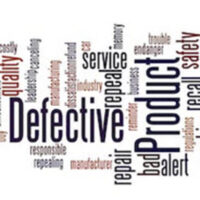What Are the Three Types of Defects for Product Liability Lawsuits?

If you have been injured by a defective product, you may be wondering if you have a case for a product liability lawsuit. In order to determine this, it is important to understand the three different types of defects that can lead to a successful product liability claim.
Product liability lawsuits can arise from many different circumstances where consumers have been injured due to defective products produced either through flawed designs or inadequate manufacturing processes or inadequate warnings and instructions provided by manufacturers about potential dangers associated with using their products as intended by consumers.
Contact our Boca Raton defective product lawyers at Leifer & Ramirez to discuss the circumstances of your case and determine if you have the legal grounds to pursue a product liability lawsuit.
Three Types of Product Liability Cases
According to the National Safety Council, 11.7 million Americans received treatment in emergency rooms for injuries resulting from consumer products. While not all of these people were injured by defective products, some of them were.
Let’s take a closer look at the three types of product defects and how they can form the basis of your claim.
1. Manufacturing Defects
Manufacturing defects occur due to errors in the actual production process. These errors can happen during assembly, fabrication, or materials used in the manufacturing process. This type of defect results in an otherwise good design being made incorrectly and making it dangerous. For example, if bolts are missing from an automobile frame, this would constitute a manufacturing defect. In order for a plaintiff to prevail on their claim based on a manufacturing defect, they must prove that the manufacturer did not produce the item correctly or according to industry standards and that this was done without any alteration after leaving the control of the manufacturer.
2. Design Defects
Design defects involve flaws in the design itself that make it inherently dangerous or unsafe when used as intended by its manufacturer. A design defect is present at all stages of production and affects every product made with that design regardless of who actually manufactures it. A plaintiff must show that there was an unsafe condition associated with using their product as intended and that there was an option available which would have been safer than what was offered by their manufacturer. For example, if a car does not come equipped with airbags due to cost-cutting measures by its manufacturer, but other cars in its class do include them, then this could be seen as a design defect under product liability law.
3. Marketing Defects
Marketing defects involve inadequate or insufficient labeling or instruction provided by manufacturers regarding potential dangers associated with their products when used as intended by consumers. To prevail on this type of claim, plaintiffs must show that they were unaware of certain risks associated with using their products because these risks were not adequately disclosed by manufacturers through warnings or instructions provided on labels or packaging accompanying those products. For example, if paint fumes are not listed as hazardous on the packaging but should have been due to their toxicity, then this could be considered a marketing defect under product liability law.
Contact Leifer & Ramirez to Get Experienced Legal Guidance
Understanding these three types of defects is key for individuals seeking compensation for injuries caused by defective products, so they can better determine whether they have grounds for filing such claims against manufacturers who produced those items.
Our experienced product liability lawyers at Leifer & Ramirez can help guide you through this process and provide information about your legal options available when it comes to pursuing damages from manufacturers who created a defective product that caused you harm. Call 561-660-9421 today for a free case evaluation.
We serve clients throughout the state of Florida, including Boca Raton, Delray Beach, Pompano Beach, Deerfield Beach, Fort Lauderdale, and West Palm Beach.
Source:
injuryfacts.nsc.org/home-and-community/safety-topics/consumer-product-injuries/


